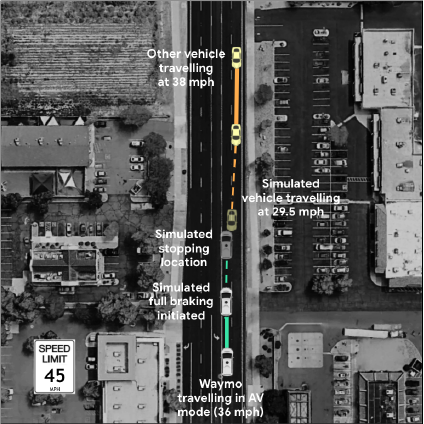All content tagged with: Standards Insurance and Liability
Filter
Post List
A Comparative Look at Various Countries’ Legal Regimes Governing Automated Vehicles
News and commentary about automated vehicles (AVs) focus on how they look and appear to operate, along with the companies developing and testing them. Behind the scenes are legal regimes—laws, regulations, and implementing bodies of different kinds—that literally and figuratively provide the rules of the road for AVs. Legal regimes matter because public welfare hinges on aspects of AV design and operation. Legal regimes can provide gatekeeping for AV developers and operators seeking to use public roads, and they can allocate liability when something goes wrong. Guiding and complementing legal regimes is public policy. Policy documents such as articulations of national strategies are sometimes used to address issues related to legal regimes and to demonstrate a jurisdiction’s support for AV development. Building on its long history analyzing AV policy issues, RAND (with support of its Institute for Civil Justice) collaborated with the University of Michigan Law School’s Law and Mobility Program to study the nature of different AV legal regimes around the world. It selected countries known to be active in this domain. The research team reviewed and shared scholarly and gray literature (which is a type of scholarship produced by an entity in which commercial publications are not the primary focus, such as white papers from a government agency), and it also consulted experts in these regimes from the public and private sectors. Under the supervision of the Law and Mobility Fellow (a lawyer), law students collected and studied materials associated with country-specific legal regimes and drafted summaries guided by RAND’s enumeration of key factors. Availability of information about legal regimes varies—access to documentation, especially in English, is uneven, even for officials in different countries working collaboratively on these issues. That constrained availability is reflected in published legal comparisons, and it motivated the research team’s systematic research, which drew from materials in English and other languages. This article summarizes the makeup of AV legal regimes of Australia, China, France, Germany, Japan, and the United Kingdom. It highlights some key contrasts, which will be developed further as the project continues. It focuses on law and policy relating to highly to fully automated vehicles (SAE Levels 4 and 5). Although guided by a common set of topics for each country, each profile reflects the material available and the factors that differentiate national approaches. The remainder of this article introduces the legal regimes of the covered countries in turn. It then provides an overview of key points of comparison and outlines future work.
Contact Responsibility as a Solution to AV Liability
By Matthew Wansley* Human drivers are a menace to public health. In 2019, 36,096 Americans were killed in motor vehicle crashes, and an estimated 2.74 million Americans were injured. Most crashes aren’t “accidents.” The National Highway Traffic Safety Administration estimates that driver error is the critical reason for…Uniform Law Commission — Making Someone Other than the Driver Responsible
As I wrote about last time, the Uniform Law Commission recently passed the Uniform Automated Operation of Vehicles Act. Today, I want to focus on Sections 5, 6, and 7 of that Act, which are titled, respectively, “Vehicle Registration,” “Automated-Driving Provider,” and “Associated Automated Vehicle.” The three sections…Will You Need Insurance for Your AV?
Earlier this week, Raphaël wrote about the role for no-fault insurance in an age of automated vehicles. The post raised several important questions about the future of the auto insurance industry as technology advances: Who do we want to protect? Passengers, for sure. But drivers? There…AVs and Insurance: Is There A Purpose For No-Fault Without A Driver?
In a recent article published on Reuters Regulatory Intelligence, a DC-area lawyer said the following regarding the potential of implementing no-fault insurance “to” automated vehicles: “Drivers have an inherent incentive to drive safely, so as not to be injured or killed on the roadways. That…Rush Delivery: On The Road (Part 3 of 3)
Last week I covered the various companies who are seeking to use aerial drones to deliver goods to your door. Today, in the third part to my series on delivery (you’ll find Part 1 here, and an even earlier post on delivery, from December of 2018, here),…AV Safety at the UN: Why Does It Matter?
I previously blogged on automated emergency braking (AEB) standardization taking place at the World Forum for Harmonization of Vehicle Regulations (also known as WP.29), a UN working group tasked with managing a few international conventions on the topic, including the 1958 Agreement on wheeled vehicles standards. It turns…Reconsidering Safety Metrics Before Software Hits the Road
“Safety.” A single word that goes hand-in-hand (and rhymes!) with CAV. If much has been said and written about CAV safety already (including on this very blog, here and there,) two things are certain: while human drivers seem relatively safe – when considering the number of fatalities…Beyond the Coasts: 5G or Wi-Fi? V2V Standardization in Action
A European Commission plan to implement the connected car-specific 802.11p “Wi-Fi” standard for vehicle-to-vehicle (V2V) communication was scrapped early July after a committee of the Council of the European Union (which formally represents individual member states’ during the legislative process) rejected it. The standard, also known as ITS-G5 in…Industry Efforts at Privacy Regulation
A couple weeks ago, I wrote a post outlining the fledgling legal efforts to address the increasingly urgent privacy concerns related to automated vehicles. While Europe’s General Data Privacy Regulation and California’s Consumer Privacy Act set a few standards to limit data sharing, the US as a whole has…

